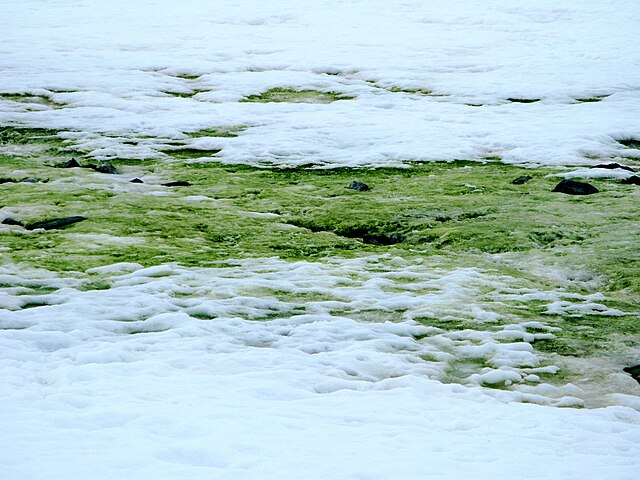Grylloblattidae, commonly known as the icebugs or ice crawlers, is a family of extremophile (psychrophile) and wingless insects that live in the cold on top of mountains and the edges of glaciers. It is the only member of Grylloblattodea, which is generally considered an order. Alternatively, Grylloblattodea, along with Mantophasmatodea, have been ranked as suborders of the order Notoptera. Grylloblattids are wingless insects mostly less than 3 cm long, with a head resembling that of a cockroach, with long antennae and having elongated cerci arising from the tip of their abdomen. They cannot tolerate warmth and many species have small distribution ranges.
Image: Galloisiana nipponensis 2
Image: Grylloblattidae (cropped)
Psychrophiles or cryophiles are extremophilic organisms that are capable of growth and reproduction in low temperatures, ranging from −20 °C (−4 °F) to 20 °C (68 °F). They are found in places that are permanently cold, such as the polar regions and the deep sea. They can be contrasted with thermophiles, which are organisms that thrive at unusually high temperatures, and mesophiles at intermediate temperatures. Psychrophile is Greek for 'cold-loving', from Ancient Greek ψυχρός (psukhrós) 'cold, frozen'.
The lichen Xanthoria elegans can continue to photosynthesize at −24 °C.
Snow surface with snow algae Chlamydomonas nivalis.
Psychrophilic algae can tolerate cold temperatures, like this Chlamydomonas green algae growing on snow in Antarctica.
Antarctic diatom algae covering the underwater surface of broken sea ice in the Ross Sea.






